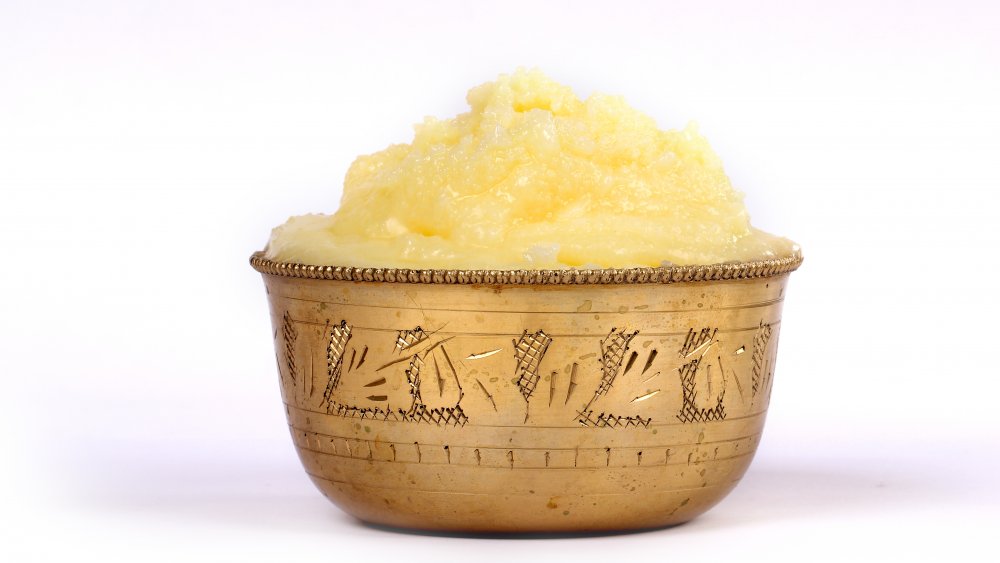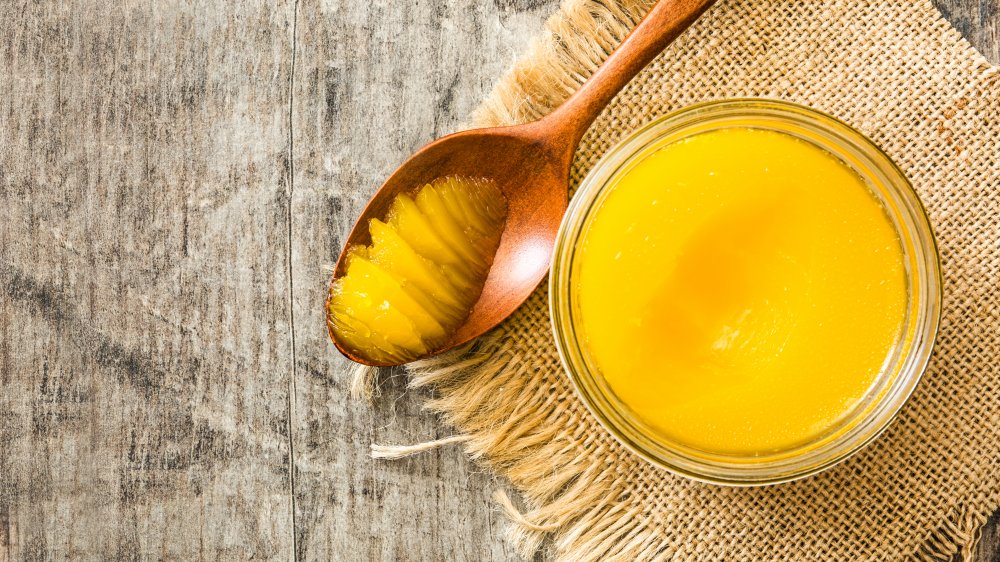The Untold Truth Of Ghee
Perhaps even more than curry leaves, cardamom, or turmeric, ghee is the cornerstone of the Indian kitchen. Ghee, or clarified butter, is absolutely essential when it comes to cooking Indian food. Because it is clarified, and water and milk solids have been removed, it has more fat than regular butter (via Healthline).
Even so, Ayurvedic medicines posits that ghee helps to carry healthy herbs throughout your body and lubricates the stomach and body tissues (via Santa Cruz Ayurveda). One of the benefits of having the milk solids removed is that you can keep ghee at room temperature without having to worry about refrigeration. Another benefit is that it can be tolerated better by people who are lactose intolerant, as opposed to regular butter, which still contains the milk solids (via Medical News Today).
All the same, it should be used in moderation because it is high in saturated fatty acids and cholesterol. As a result, scientists believe that it could be responsible for the rise in coronary artery disease in India (via Live Mint).
Best uses for ghee
In Indian dishes such as curries and dhals, ghee is typically used at the beginning, when you're making the base of the dish, in place of oil or butter. It has a roasted, nutty taste and is able to add an umami hint to your dishes because of its condensed flavor (via Bon Appetit).
Because all of the milk solids have been removed, it has a higher smoke point than regular butter as well as many oils (via 100 Days of Real Food). Because of its unctuous nature, ghee is also often used in Indian desserts and is essential in an Indian sweet known as ladoo (via Curious Cuisiniere). Ghee is very easy to find at Indian or Pakistani grocery stores, but you can also make it at home with just a few steps and a little bit of time. All you have to do is melt butter, and strain it. Just be careful not to cook it too long or it will burn and turn brown (via Downshiftology).

